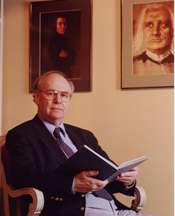Liszt and the Keyboard: The Wizard Casts his Spells, by Alan Walker. Th @ 9:30am.
 On Thursday morning, we heard a wonderful session by Alan Walker, an author of many books and is a specialist on Romantic Era composers and music. Mr. Walker is a highly intelligent man and a gifted speaker — it was wonderful to hear him speak about Liszt. He spoke almost as if he knew Liszt personally!
On Thursday morning, we heard a wonderful session by Alan Walker, an author of many books and is a specialist on Romantic Era composers and music. Mr. Walker is a highly intelligent man and a gifted speaker — it was wonderful to hear him speak about Liszt. He spoke almost as if he knew Liszt personally!
Here is a brief list of fast facts I jotted down during the speech:
Liszt was very interested in hearing/communicating human expression — and not just music.
Liszt’s philosophy on practicing was to practice less and get a life! Without a social life, you cannot know what kind of human emotions to communicate through your music.
Liszt gave away what he earned and deliberately lived poorly. He felt that “genius carries with it obligation.” For example, when his homeland of Hungary suffered from famine, he sent a large amount of funds.
During Liszt’s “Years of Transcendental Execution,” which involved 7-8 years of concertizing, Liszt standardized the piano’s position on the stage, standardized playing by memory, and really created the “recital.” He preferred the new term “recital” to “concert.” Although some were skeptical, saying, “How can you speak on the piano?!” Liszt said, “I am the concert!” In these new recitals, the performer was no longer supported by other artists but performed solo.
Liszt retired from performing at age 34. He wanted to compose, conduct, teach, write, and organize festivals.
Description of Liszt’s hands: long fingers, no webbing, blunt rather than tapered fingertips, a long and highly independent 4th finger.
Liszt changed piano music! He gave it new treatment in a variety of ways…
- Double Escapement mechanism of the piano — allows single notes to be reiterated rapidly. The key bounces at the halfway point. Liszt used this technique often in his pieces. It creates a unique sustaining power. You’ll never see it used by Chopin, Mendelssohn, or Schumann.
- Leaps – pieces such as La Campenela feature large leaps which Liszt found easy to play.
- Liszt Octaves – Instead of using Double Octaves (blocked octaves in both hands), Liszt enjoyed using Liszt octaves, which involves alternating hands with the thumbs locked on the same key. This technique gives almost the same thundering effect as Double Octaves, but requires much less effort.
- Glissando – Again, this is a technique which you will never find in Schumann or Mendelssohn. Listz’s advice to his students was always to gliss up using the nail of 2 and 3 (RH), and gliss down using the nail of the thumb (RH). (And vice versa for the LH.) And, never expose flesh!
- Tremulendo – This is another rather vulgar orchestral device which Liszt like to employ. It is not recommended to play pieces that use this device unless the tremulendos can be perfectly controlled! Liszt’s advice to his students was to use as little effort as possible, and “Don’t make omelets!!” 🙂 One must get to the “bump” at the halfway point of depressing the keys, and use gentle hand and arm vibrations.
Liszt was very popular in his day. By 1875, he was the best-known Hungarian.
Liszt never charged a dime for his teaching! He frequently taught in masterclass settings. He despised institutionalized teaching, but when he did later take a position at a new school, he wanted no salary — just living accommodations. And he changed the curriculum drastically so that all pianists had to take composition classes, and all composers had to take piano. And the entry requirements were changed so that pianists were required to be able to read orchestral scores, transpose, and improvise on the spot.
Although many of his friends encouraged him to stop playing piano and touring over the years so he could pursue other things like composition more fully, Liszt always felt that he simply could not give up the piano. It was too much a part of him.

